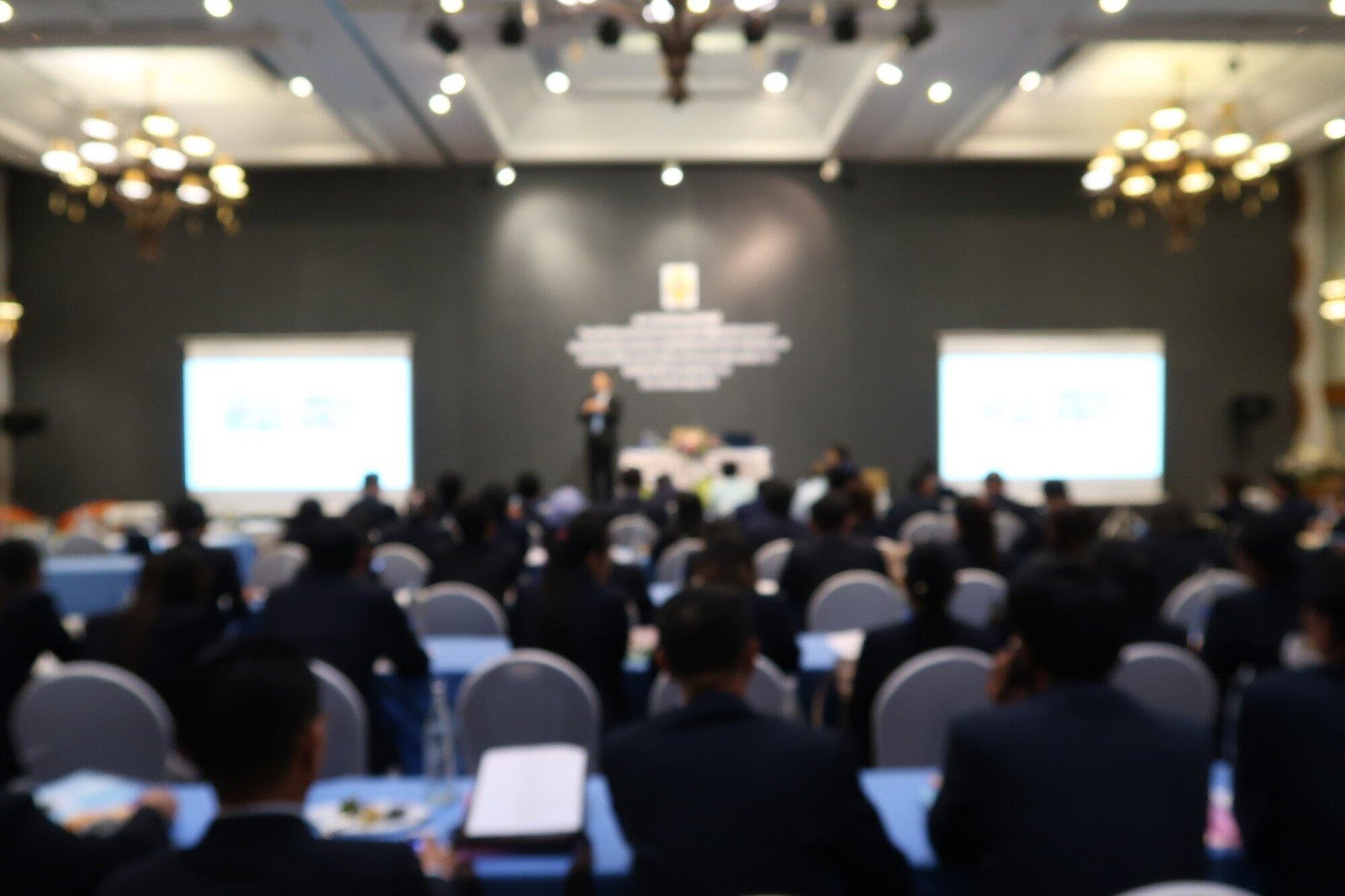General
How to Make an Asian Wedding Photography Timeline?

Planning a wedding is fun, and choosing when to take pictures is an important part. For Asian weddings, we’ll help you make a simple plan so you don’t miss capturing any special moment.
We’ll help you save all the smiles, laughter, and traditional activities in photos you’ll love forever.
When you’re planning, think about when and where to take different kinds of pictures, like traditional ceremonies, family photos, and natural, unplanned shots. Work closely with your photographer who knows about Asian weddings to make a schedule that fits the wedding customs and what you want.
Common Mistakes to Avoid When Planning a Wedding Photography Timeline:
Ensure a seamless flow for your big day by sidestepping these common errors. Additionally, consider exploring various wedding photography styles to find the perfect match for your unique celebration.
- Allocate Sufficient Photography Budget: Prioritize your budget to secure a skilled photographer capable of capturing the intricacies of Asian wedding ceremonies.
- Infuse Cultural Uniqueness: While seeking inspiration, infuse your wedding with cultural elements, steering away from direct replication.
- Vet Your Photographer’s Work: Be discerning in assessing a photographer’s portfolio, looking for authentic captures and avoiding unnatural compositions.
- Build in Extra Time: Account for additional time in your timeline to gracefully handle unexpected delays.
Proactively addressing these considerations will contribute to a smoother photography experience.
Ideal Timeframes for Each Activity in Asian Wedding Photography
Tailor your timeline to accommodate the unique aspects of Asian weddings with these ideal timeframes:
- Ceremonial Preparations (Pithi/Mehndi): 1-2 hours.
- Baraat Arrival and Rituals: 1 hour.
- Ceremony: 2-3 hours.
- Couple Portraits (Post-Ceremony): 1-2 hours.
- Family Portraits: 1-2 hours.
- Reception: 3-4 hours, allowing for cultural performances and speeches.
These are general guidelines, and adjustments can be made based on specific rituals and preferences.
Adapting the Timeline for Unforeseen Events in Asian Wedding Photography
Navigate unexpected events with finesse using these strategies:
- Incorporate Buffer Time: Add extra time for each activity to accommodate potential delays.
- Effective Communication: Maintain open communication with your photographer, wedding party, and vendors.
- Flexibility: Be adaptable to adjustments in the timeline to manage unexpected circumstances.
- Prioritize Key Moments: Focus on capturing essential cultural and personal moments first.
- Coordinate with Vendors: Collaborate closely with your photographer and vendors to ensure everyone is aligned.
- Maintain Serenity: In the face of unforeseen events, stay composed to facilitate optimal photography outcomes.
By combining cultural sensitivity, meticulous planning, and flexibility, your Asian wedding photography timeline can seamlessly adapt to unforeseen events, ensuring every cherished moment is immortalized with authenticity and artistry.
Conclusion:
A well-organized wedding photography timeline is crucial for capturing precious moments smoothly. Begin by setting the ceremony time and include buffer periods for potential delays. Plan each photo session strategically, considering lighting and location. Avoid common pitfalls, stay flexible for unexpected events, and communicate clearly with vendors. Whether it’s a traditional or Asian wedding, the goal is to create a stress-free and memorable experience that immortalizes the unique moments of your celebration.

Say hello to Winston Papyrus, the person who writes the stories on Socialcorner.co.uk. Winston is really good at making stories that help you feel calm, especially if life feels a bit busy and confusing.
General
Rena monrovia when you transport something by car …

Transporting goods by car has become a practical solution for many, offering flexibility and immediacy that larger vehicles or commercial services can’t always match.
Whether you’re moving house, delivering products, or simply transporting items from one place to another, understanding the best practices for car transportation is crucial. This article focuses on how to effectively use Rena Monrovia for transporting goods by car, highlighting safety, efficiency, and legal considerations.
Rena Monrovia: Understanding Its Role in Transport
What is Rena Monrovia?
Rena Monrovia refers to a concept, service, or product (hypothetical or real) related to the transportation sector. It could represent a brand, a model, or a specialized service aimed at enhancing the efficiency of transporting goods and services by car. This section would delve into the specifics of Rena Monrovia, its inception, development, and the solutions it offers within the transport industry.
The Importance of Rena Monrovia in Modern Transportation
In today’s fast-paced environment, the ability to quickly, safely, and efficiently move items by car is invaluable. Rena Monrovia enhances this capability by providing tailored solutions that address the unique challenges faced by car transporters. From optimizing space to ensuring legal compliance and safety, Rena Monrovia stands out as a pivotal element in modern logistical operations.
Planning Your Transport: A Step-by-Step Guide
Assessing Your Transport Needs with Rena Monrovia
Before you load your car and hit the road, assessing your specific transport needs is essential. Consider the type, quantity, and destination of the goods. Rena Monrovia’s tools and services can help streamline this process, ensuring that your cargo is appropriate for car transport both in size and legal requirements.
Choosing the Right Vehicle for Transportation
Not all cars are suited for all types of cargo. This part of the guide will cover how to select the best vehicle for your needs, taking into account the weight, size, and vulnerability of the goods you intend to transport. Rena Monrovia might offer a fleet or recommend certain types of cars that are best suited for different kinds of goods.
Packing Techniques for Safe Transportation
Learn the art of packing from the experts at Rena Monrovia. This section will provide detailed instructions on how to secure your goods within the car, utilizing space efficiently while preventing damage during transport. Tips on the latest packing materials and methods will also be included to help keep your items safe throughout their journey.
Legal and Safety Considerations
Understanding the Legal Aspects of Transporting by Car
Transporting goods by car isn’t as simple as loading up and driving off. There are various legal considerations to take into account, such as weight limits, item restrictions, and necessary documentation. Rena Monrovia provides guidance on staying compliant with local, state, and federal regulations, ensuring that your transport activity is lawful.
Ensuring Safety While Transporting with Rena Monrovia
Safety is paramount when transporting goods by car. This segment will discuss how to maintain safety standards, including the securement of items, vehicle maintenance, and the importance of regular checks. Using Rena Monrovia’s resources, transporters can minimize risks associated with car transportation.
Maximizing Efficiency in Transport
Time Management Tips for Efficient Transport
Efficiency isn’t just about speed; it’s about optimizing the entire transport process to save time and resources. This section will explore time management strategies that can help you plan and execute transportation with Rena Monrovia more effectively, reducing delays and increasing productivity.
Cost-Effective Transport Strategies
Learn how to transport goods without breaking the bank. This part will cover cost-effective strategies for using Rena Monrovia services, including the best times to transport to avoid high costs, and how to leverage routes and driving strategies to reduce fuel consumption.
In Conclusion
Transporting goods by car involves more than just driving from point A to point B. It requires careful planning, adherence to legal standards, and considerations for safety and efficiency. Rena Monrovia offers a comprehensive solution that enhances the transport experience, providing tools and insights that ensure success. Whether you’re a small business owner, a freelancer, or someone simply looking to move items safely and efficiently, understanding the role of Rena Monrovia in your transportation endeavors is essential.

Say hello to Winston Papyrus, the person who writes the stories on Socialcorner.co.uk. Winston is really good at making stories that help you feel calm, especially if life feels a bit busy and confusing.
General
Modern Workplace Challenges and Strategies

The importance of health and well-being at work has been a hot topic since the 1990s.
It’s now widely accepted that health concerns aren’t just personal issues—they’re crucial aspects of how an organization functions and succeeds.
This focus on well-being impacts both employees and employers, affecting productivity, job satisfaction, and staff retention. This article aims to explore into the complex relationship between working conditions, health, and safety, providing an in-depth look at the current situation and potential future trends.
Surveys as Tools for Understanding Work Conditions and Health
Eurofound’s European Working Conditions Survey (EWCS) stands as a primary source of information on job quality and its relationship with the health and well-being of various worker groups. The survey delves into the connections between working conditions and both physical and mental health outcomes for workers, alongside issues such as absenteeism and presenteeism. These insights are crucial for identifying trends, comprehending the ramifications of particular working environments, and guiding policy-making.
In 2021, in response to the unique challenges posed by the COVID-19 pandemic to worker health, safety, and well-being, the European Working Conditions Telephone Survey (EWCTS) was conducted. This survey offered a contemporaneous overview of the specific difficulties workers encountered during an unparalleled global crisis, providing essential data to inform future crisis response and workplace health and safety strategies.
The COVID-19 Impact: A New Landscape for Health and Well-being at Work
The COVID-19 pandemic has profoundly transformed the working conditions of numerous individuals. Eurofound’s distinctive e-survey, ‘Living, Working and COVID-19’, investigates the pandemic’s repercussions on individuals’ lives. It encompasses queries regarding people’s employment situations, teleworking, experiences of working remotely, and the effects on work-life balance, in addition to job quality and health and safety at work.
The insights garnered from this survey not only illustrate the resilience and adaptability of workers but also accentuate the necessity for ongoing support and resources to navigate the persistent impacts of the pandemic.
Work-Related Health Outcomes in the Age of Digitalisation
The digital revolution has heralded new modalities for organising work. Telework and ICT-based mobile work (TICTM) have risen in this era, enabling workers and employers to tailor the timing and location of work to their preferences. Nonetheless, these innovative work arrangements introduce fresh challenges.
The research scrutinises the employment and working conditions of individuals engaged in TICTM arrangements, with a focus on the effects on their work-life balance, health, performance, and career opportunities, as well as the right to disconnect. Comprehending these impacts is pivotal in formulating policies and practices that bolster healthy and productive remote working environments.
Sustainable Work Over the Life Course: A Long-Term Perspective
The notion of sustainable work throughout the life course is attracting increasing scrutiny. This entails the development of innovative solutions for working conditions and career trajectories that enable workers to maintain their physical and mental well-being, motivation, and productivity across a prolonged working life.
Eurofound’s most recent report on working conditions and sustainable work charts the advancements made since 2000 in enhancing working conditions, investigates whether improvements have been equitably distributed among all workers, accentuates the demographics at risk of substandard working conditions, and pinpoints emerging challenges to maintaining high job quality in the evolving employment landscape. Adopting this long-term outlook is crucial in establishing workplaces that uphold the health and well-being of employees throughout their professional lives.
The Role of Social Dialogue in Shaping Health and Safety at Work
Social dialogue is instrumental in defining health and safety standards at work. Research conducted by the Network of Eurofound Correspondents has detailed the discussions within national social dialogues across the EU, particularly those concerning working life and health and safety, influenced significantly by COVID-19.
This investigation sheds light on policy areas geared towards adapting to the pandemic and facilitating the return to work, with a special focus on new health and safety protocols in the workplace. Additionally, it examines the pandemic’s effect on social dialogue mechanisms, collective bargaining, and industrial relations. Grasping these dynamics is essential for devising strategies that enhance health and safety at work through cooperative decision-making processes.
The Path Towards a Healthier and More Sustainable Work Environment
In conclusion, the health and well-being of workers lie at the heart of organisational development and success. As the nature of work undergoes continuous transformation, comprehending and addressing the emerging challenges and opportunities becomes imperative. This necessitates persistent research, dialogue, and policy interventions to ensure that all workers can benefit from favourable working conditions and safeguard their physical and mental health.
As we venture into the future of work, prioritising these elements is essential in cultivating a healthier and more sustainable work environment for everyone. The pursuit of healthier workplaces is a collaborative endeavour, demanding the dedication and cooperation of employers, employees, policymakers, and researchers alike. By joining forces, we have the potential to foster work settings that not only bolster productivity but also promote the comprehensive well-being of every employee.

Say hello to Winston Papyrus, the person who writes the stories on Socialcorner.co.uk. Winston is really good at making stories that help you feel calm, especially if life feels a bit busy and confusing.
General
The ROI of Implementing Onboarding Software in Your HR Processes

Investing in onboarding software is a smart move for companies looking to streamline their HR procedures.
These systems cut down on costs and boost productivity by handling administrative tasks and helping new employees settle in smoothly.
Using onboarding software doesn’t just save time—it also improves employee engagement, retention, and how well the company performs overall.
Key Takeaways:
- Onboarding software can significantly improve HR operational efficiency and new hire experiences.
- ROI of onboarding software materializes through time savings, lower turnover rates, and enhanced productivity.
- A systematic approach to calculating ROI helps organizations make informed decisions about onboarding tools.
- Implementing onboarding software requires careful planning but offers long-term cultural and financial benefits.
Enhancing the New Hire Experience
The initial days of a new job are critical for employee retention and satisfaction. For instance, Greenhouse.com: onboarding software gives new employees a solid start with guided workflows, training resources, and personalized content.
A positive onboarding experience is about the convenience of digital paperwork and encompasses the employee’s integration into the company culture and team dynamics. This holistic approach facilitated by onboarding software can significantly enhance job satisfaction and contribute to higher retention rates, delivering a solid ROI by reducing the costs associated with turnover.
Impact on HR Efficiency
HR departments that leverage onboarding software can witness substantial efficiency improvements. Time-consuming tasks such as data entry, paperwork processing, and compliance checks can be streamlined or automated, freeing HR professionals to focus on higher-value activities like talent development and strategic planning. These efficiency gains are not merely about resource allocation but also contribute to minimizing errors and improving compliance – factors that carry significant financial implications for organizations.
Long-Term Benefits for Company Culture
The benefits of onboarding software exceed immediate operational improvements and impact the company culture in the long run. A systematic onboarding process supports the development of a cohesive work environment where employees understand their roles, expectations, and the company’s vision. With the foundation for success laid from day one, employees can contribute more effectively, fostering a productive and collaborative culture that drives organizational success.
Considerations When Implementing Onboarding Software
While the advantages are clear, the implementation of onboarding software must be thoughtfully planned. Organizations should consider integrating existing HR systems, user adoption, and scalability to accommodate organizational growth. Cost and feature comparisons among solutions, vendor reputation, and support services are critical considerations. By addressing these aspects, companies can ensure a smooth transition to a digital onboarding process and maximize their ROI.
Calculating the ROI of Onboarding Software
To fully appreciate the return on investment (ROI) of onboarding software, companies must consider the direct and indirect costs associated with the manual onboarding process. Direct costs, like HR labor hours, can be easily quantified, while indirect costs, such as the impact of a poor onboarding experience on employee turnover, require more nuanced measurement. Calculating ROI involves summing all these savings and productivity gains and then relating them to the investment made in the onboarding solution. This calculation should reflect not only the immediate gains but also the long-term strategic advantages that come with enhanced employee lifecycle management.
Conclusion
Implementing onboarding software is a decision that can yield considerable returns in both tangible and intangible forms. From enhancing HR efficiency to fortifying company culture, onboarding sets the tone for an employee’s journey and, consequently, an organization’s success. As businesses assess the initial investment against the potential gains, it’s evident that onboarding solutions can play a pivotal role in driving sustainable growth and competitive advantage.

Say hello to Winston Papyrus, the person who writes the stories on Socialcorner.co.uk. Winston is really good at making stories that help you feel calm, especially if life feels a bit busy and confusing.
-
General11 months ago
Modern Workplace Challenges and Strategies
-
Fashion1 year ago
Jordan 4 Reps: The Ultimate Guide
-
General11 months ago
Digital Marketing Strategies for Selling Your Home in the UK
-
General1 year ago
Post-Op Care: How to Ensure a Speedy Recovery After Hair Transplant Surgery
-
General1 year ago
9 Fun Sibling Bonding Activities That Will Strengthen Your Relationship
-
General10 months ago
Rena monrovia when you transport something by car …
-
General1 year ago
The Dos and Don’ts of Waxing Underarms: Expert Tips for a Smooth Process
-
Lifestyle10 months ago
Portable Stage Innovations






